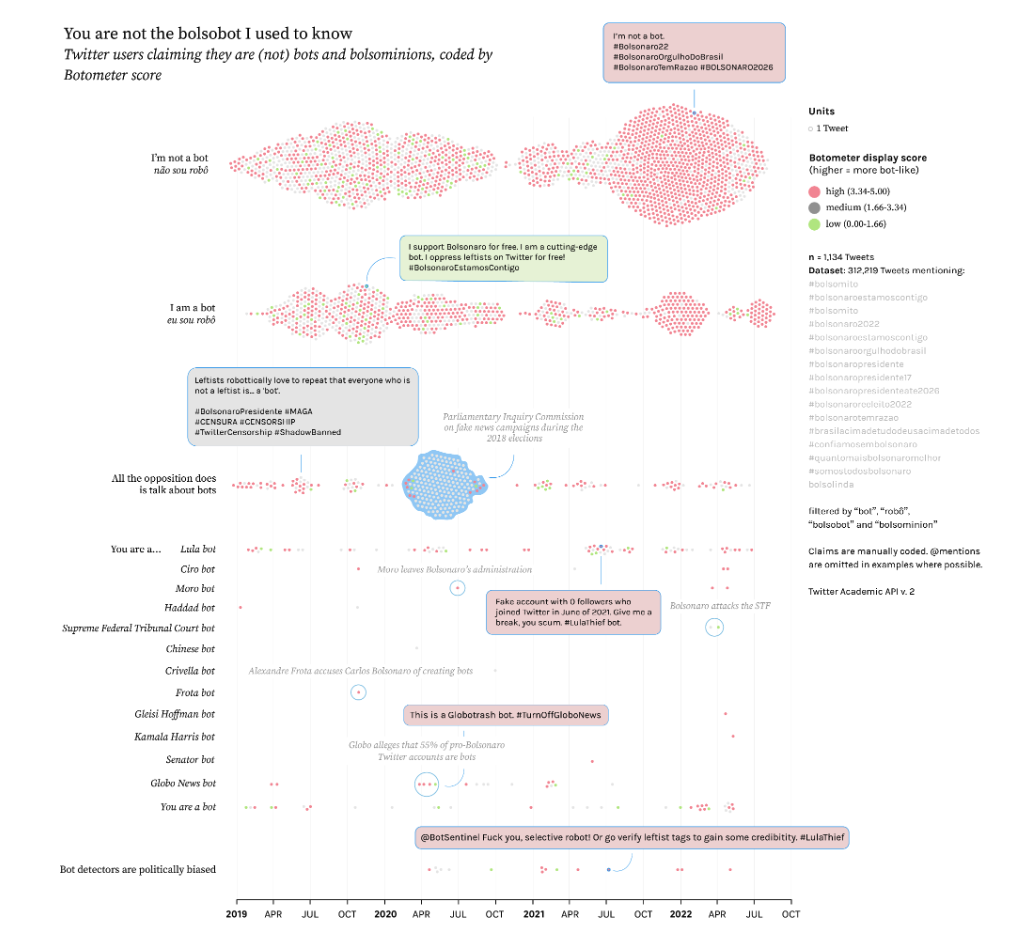An article on “Quali-quanti visual methods and political bots: A cross-platform study of pro- & anti- bolsobots” has just been published in the special issue “Methods in Visual Politics and Protest” of the Journal of Digital Social Research, co-authored by Public Data Lab associates Janna Joceli Omena, Thais Lobo, Giulia Tucci, Elias Bitencourt, Emillie de Keulenaar, Francisco W. Kerche, Jason Chao, Marius Liedtke, Mengying Li, Maria Luiza Paschoal, and Ilya Lavrov.
The article provides methodological contributions for interpreting bot-associated image collections and textual content across Instagram, TikTok and Twitter/X, building on a series of data sprints conducted as part of the Public Data Lab “Profiling Bolsobot Networks” project.
The full text is available open access here. Further details and links can be found at the project page. Below is the abstract:
Computational social science research on automated social media accounts, colloquially dubbed “bots”, has tended to rely on binary verification methods to detect bot operations on social media. Typically focused on textual data from Twitter (now rebranded as “X”), these methods are prone to finding false positives and failing to understand the subtler ways in which bots operate over time and in particular contexts. This research paper brings methodological contributions to such studies, focusing on what it calls “bolsobots” in Brazilian social media. Named after former Brazilian President Jair Bolsonaro, the bolsobots refer to the extensive and skilful usage of partial or fully automated accounts by marketing teams, hackers, activists or campaign supporters. These accounts leverage organic online political culture to sway public opinion for or against policies, opposition figures, or Bolsonaro himself. Drawing on empirical case studies, this paper implements quali-quanti visual methods to operationalise specific techniques for interpreting bot-associated image collections and textual content across Instagram, TikTok and Twitter/X. To unveil the modus operandi of bolsobots, we map the networks of users they follow (“following networks”), explore the visual-textual content they post, and observe the strategies they deploy to adapt to platform content moderation. Such analyses tackle methodological challenges inherent in bot studies by employing three key strategies: 1) designing context-sensitive queries and curating datasets with platforms’ interfaces and search engines to mitigate the limitations of bot scoring detectors, 2) engaging qualitatively with data visualisations to understand the vernaculars of bots, and 3) adopting a non-binary analysis framework that contextualises bots within their socio-technical environments. By acknowledging the intricate interplay between bots, user and platform cultures, this paper contributes to method innovation on bot studies and emerging quali-quanti visual methods literature.

